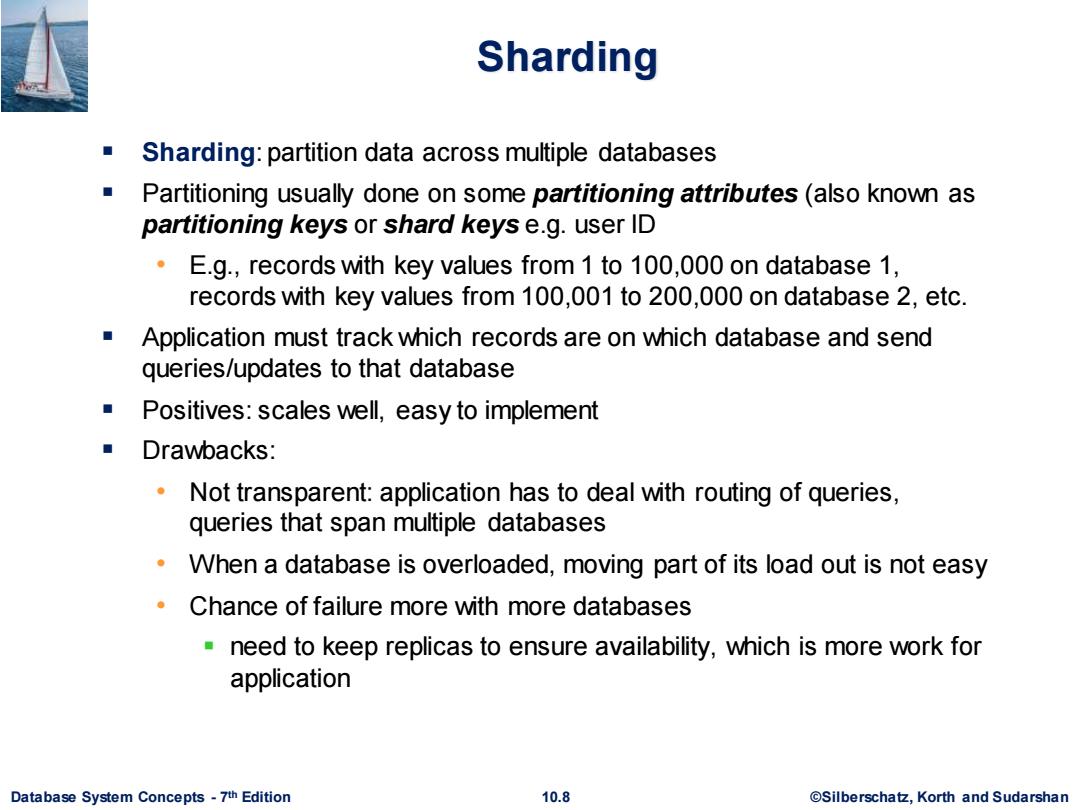正在加载图片...

Sharding Sharding:partition data across multiple databases Partitioning usually done on some partitioning attributes(also known as partitioning keys or shard keys e.g.user ID E.g.,records with key values from 1 to 100,000 on database 1, records with key values from 100,001 to 200,000 on database 2,etc. Application must track which records are on which database and send queries/updates to that database Positives:scales well,easy to implement Drawbacks: Not transparent:application has to deal with routing of queries, queries that span multiple databases When a database is overloaded,moving part of its load out is not easy Chance of failure more with more databases need to keep replicas to ensure availability,which is more work for application Database System Concepts-7th Edition 10.8 @Silberschatz,Korth and SudarshanDatabase System Concepts - 7 10.8 ©Silberschatz, Korth and Sudarshan th Edition Sharding ▪ Sharding: partition data across multiple databases ▪ Partitioning usually done on some partitioning attributes (also known as partitioning keys or shard keys e.g. user ID • E.g., records with key values from 1 to 100,000 on database 1, records with key values from 100,001 to 200,000 on database 2, etc. ▪ Application must track which records are on which database and send queries/updates to that database ▪ Positives: scales well, easy to implement ▪ Drawbacks: • Not transparent: application has to deal with routing of queries, queries that span multiple databases • When a database is overloaded, moving part of its load out is not easy • Chance of failure more with more databases ▪ need to keep replicas to ensure availability, which is more work for application